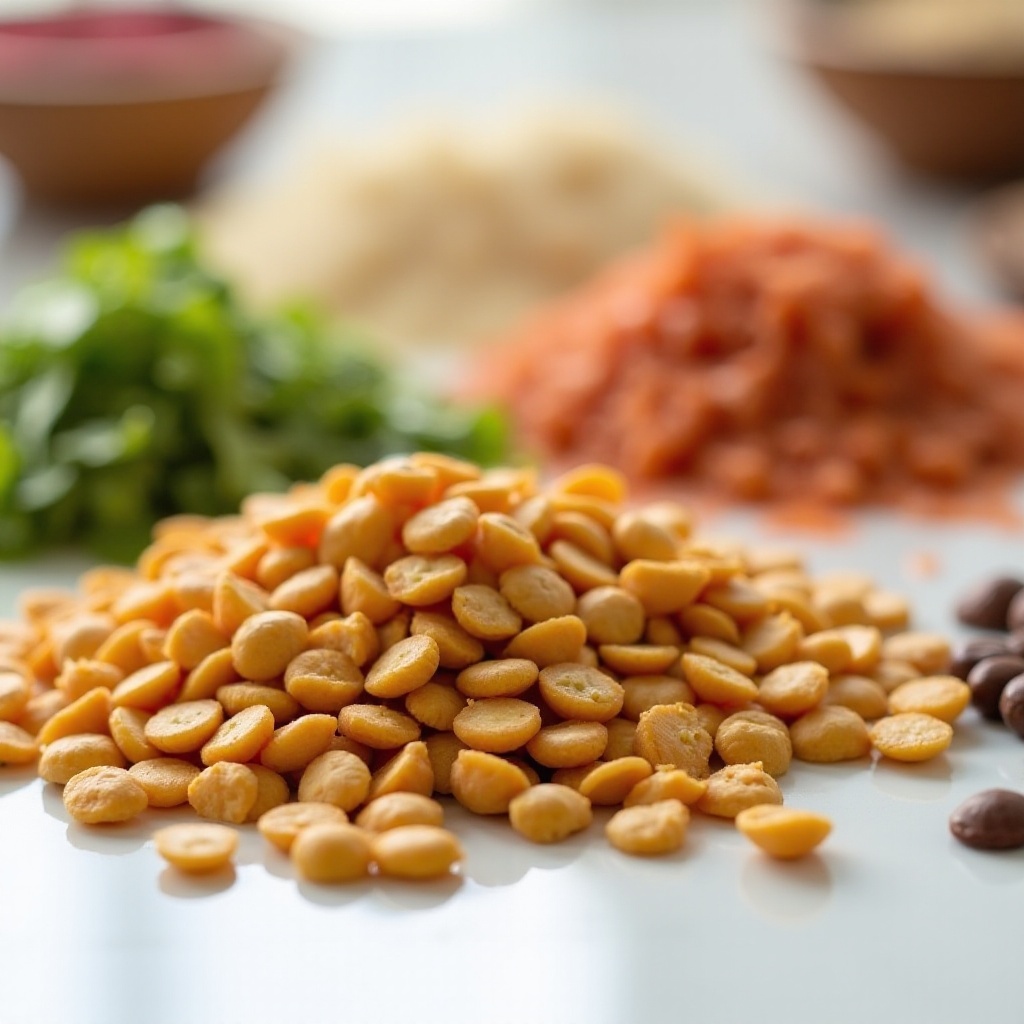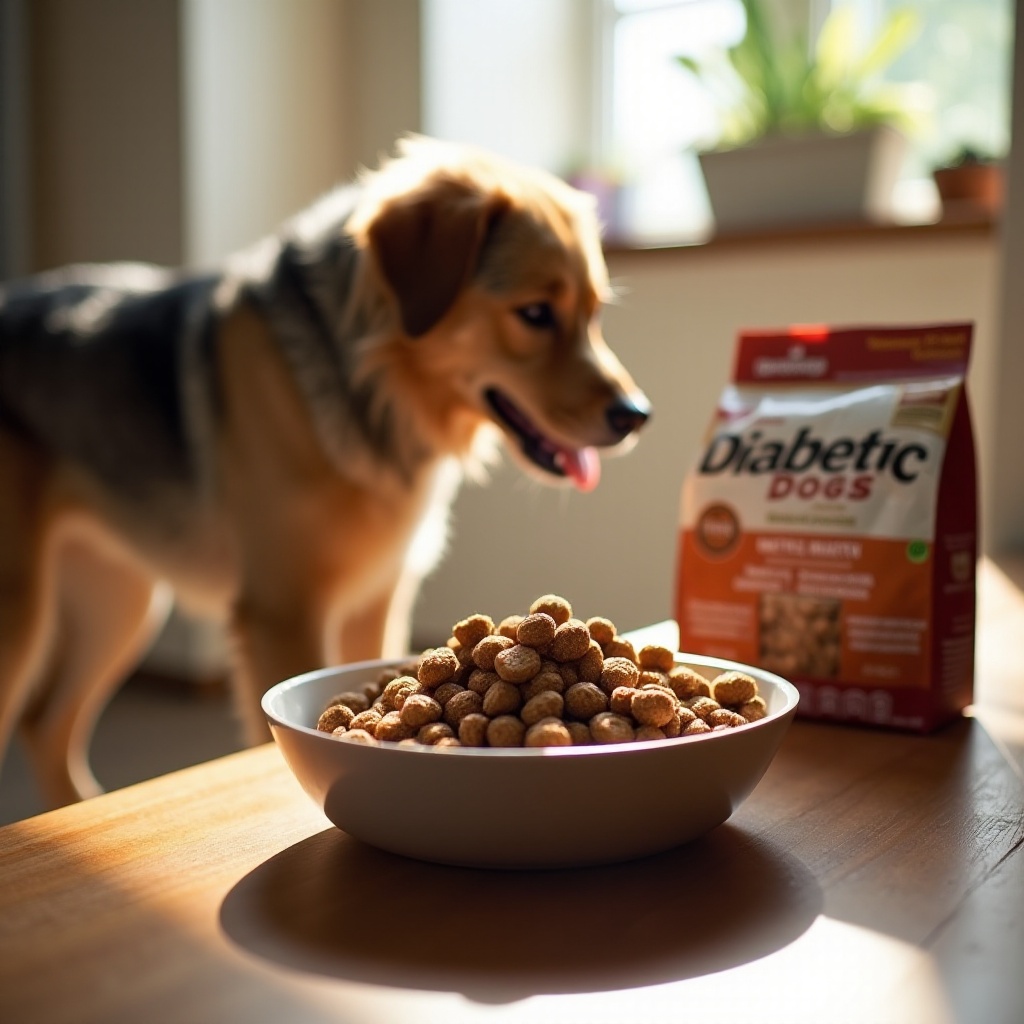Introduction
Managing diabetes in dogs can be challenging, but the right diet makes it simpler. Like humans, dogs with diabetes need carefully balanced meals to regulate their blood sugar levels. The importance of selecting the right dry dog food cannot be overstated, as it plays a crucial role in managing this chronic condition. In this article, we will explore the best dry dog food for diabetic dogs, address the essential nutrients they need, list ingredients to avoid, suggest top food brands, and provide tips for effectively managing your dog’s diet.

Understanding Diabetes in Dogs
Diabetes mellitus in dogs is a condition where their bodies cannot produce enough insulin or do not use insulin correctly. This leads to elevated blood sugar levels, which can cause multiple health issues. Symptoms of canine diabetes include excessive thirst, increased urination, weight loss, and lethargy. It is critical to work closely with your veterinarian to diagnose and establish a treatment plan.
A diabetic diet for dogs involves managing their carbohydrate intake to avoid spikes in blood glucose. Dry dog food designed for diabetic dogs helps maintain consistent blood sugar levels and provides balanced nutrition, ensuring they get the necessary nutrients without excess sugars or fats.
Essential Nutrients for Diabetic Dogs
Diabetic dogs require a diet that helps manage their blood glucose levels effectively. The key nutrients to look for in their food include:
- Complex Carbohydrates: Slow-digesting carbs like sweet potatoes, oatmeal, and brown rice help maintain stable blood sugar levels. These carbs provide long-lasting energy without insulin spikes.
- High-Quality Protein: Proteins from chicken, fish, and lamb are essential for muscle maintenance and overall health. They aid in tissue repair and help keep your dog feeling full and satisfied.
- Healthy Fats: Omega-3 and Omega-6 fatty acids are essential for maintaining a dog’s coat and skin health. Ingredients like fish oil provide these healthy fats without contributing to insulin resistance.
- Vitamins and Minerals: Diabetic dogs benefit from additional vitamins and minerals, like Vitamin E and zinc, which support overall health and immune function. Antioxidants can also help mitigate the oxidative stress caused by diabetes.
Top Ingredients to Look for in Dry Dog Food
When selecting the best dry dog food for diabetic dogs, consider ingredients that are beneficial for managing diabetes due to their low glycemic index and nutritional profile:
- Whole Grains: Ingredients such as brown rice and oats provide complex carbohydrates that digest slowly and aid in blood sugar control.
- Lean Proteins: Chicken, turkey, and fish deliver essential amino acids for muscle maintenance and metabolic processes.
- Fibrous Vegetables: Vegetables like sweet potatoes, pumpkin, and green beans offer fibers that help slow down glucose absorption.
- Omega Fatty Acids: Sources like flaxseed and salmon oil fortify your dog’s diet with healthy fats necessary for overall health.
Ingredients to Avoid
Certain ingredients can exacerbate a diabetic dog’s condition and should be avoided to prevent spikes in blood sugar levels:
- Simple Carbohydrates: Sugar, corn syrup, and white bread can cause rapid increases in blood glucose levels.
- By-Products and Fillers: Ingredients like corn gluten, wheat gluten, and meat by-products offer little nutritional value and can negatively impact your dog’s blood sugar control.
- Artificial Additives: Colors, flavors, and preservatives can irritate your dog’s system and should be avoided whenever possible. Opt for natural ingredients instead.

Best Dry Dog Food Brands for Diabetic Dogs
Selecting the right brand of dry dog food is crucial for managing your dog’s diabetes. Here are some of the best options recommended by veterinarians and pet nutrition experts:
1. Hill’s Prescription Diet w/d
Hill’s Prescription Diet w/d is designed specifically for dogs with diabetes. It provides high fiber content, optimal fat levels, and a tailored blend of carbohydrates to ensure stabilized blood glucose levels.
2. Royal Canin Glycobalance
Royal Canin Glycobalance offers a balanced formula with high-quality proteins and controlled carbohydrate levels. It is designed to help regulate blood sugar and maintain a healthy weight.
3. Orijen Fit & Trim
Orijen Fit & Trim is a high-protein, grain-free option ideal for managing diabetes. It uses fresh, regionally sourced ingredients and provides a low glycemic index to aid in blood sugar regulation.
4. Wellness CORE Grain-Free Reduced Fat
Wellness CORE Grain-Free Reduced Fat offers a nutrient-dense, grain-free formula with lower fat content. The protein-rich recipe helps maintain lean muscle mass while supporting weight management.
5. Nutrisca Chickpea and Chicken Recipe
Nutrisca Chickpea and Chicken Recipe combines high-quality chicken with low glycemic index chickpeas, providing a balanced, nutrient-rich option for diabetic dogs.
Feeding Tips for Diabetic Dogs
Feeding a diabetic dog involves more than just selecting the right food. Here are some tips to ensure proper management:
- Regular Feeding Schedule: Consistency is key. Always feed your dog at the same times each day to avoid fluctuations in blood sugar levels.
- Measured Portions: Weigh your dog’s food to ensure they receive the correct amount each meal. Overfeeding can lead to weight gain and complicate diabetes management.
- Monitor: Regularly monitor your dog’s blood sugar levels and adjust their diet as needed in consultation with your vet.

Transitioning Your Dog to a Diabetic-Friendly Diet
Switching your dog to a new diet should be done gradually to avoid digestive issues. Follow these steps:
- Mix Old and New Food: Start by mixing a small amount of the new diabetic-friendly food with the old food.
- Gradual Increase: Gradually increase the proportion of the new food over 7–10 days.
- Observe: Watch for any changes in your dog’s behavior or symptoms. Avoid abrupt transitions to prevent digestive upset.
Conclusion
Managing a diabetic dog’s diet requires careful selection of the right dry dog food and consistent feeding practices. By understanding their nutritional needs and choosing the best brands, you can help your dog maintain a healthy, happy life despite diabetes.
Frequently Asked Questions
What are the signs that my dog has eaten the wrong food?
If your diabetic dog eats the wrong food, you may observe symptoms such as increased thirst, frequent urination, lethargy, vomiting, or unusual behavior. Contact your vet immediately if you recognize these signs.
How often should I feed my diabetic dog?
Diabetic dogs benefit from regular, scheduled feedings to keep their blood sugar levels stable. Usually, this involves feeding them two to three times a day at the same times each day. Consult your vet for tailored advice specific to your dog’s needs.
Can I give treats to my diabetic dog?
Yes, but it’s important to choose diabetic-friendly treats with low sugar content. Look for treats made with high-fiber ingredients and avoid those with simple carbohydrates or artificial additives. Always check with your vet before introducing new treats into your dog’s diet.
